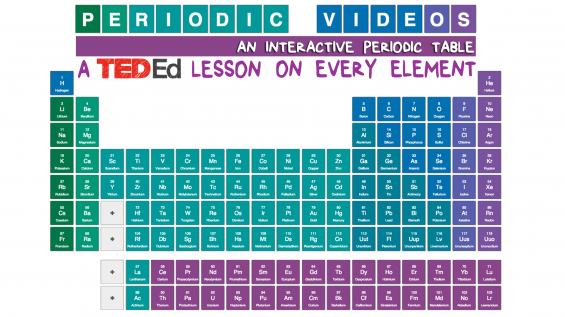
Dispatches from TED Active – Part 2

Last week, TED-Ed got to hang out with some fantastic people, including some faces you might recognize. Some of our guests make really successful YouTube videos about all sorts of things. We picked their brains about their work in creating educational video content during our brainstorm sessions, but we didn’t think it was fair to keep their wisdom to ourselves, so we asked three of them to share their insights.
First, let’s meet some of our creators.
Alex Dainis makes and stars in the YouTube series Bite Sci-zed.
Brady Haran is the creator of YouTube channels like Sixty Symbols, Numberphile, and Periodic Table of Elements.
George Zaidan is a freelance video maker and producer who’s worked on everything from Good Eats to a lesson right here at TED-Ed.
Here’s what they shared with us.
1. How do you come up with ideas for videos?
Brady Haran: I have my best ideas in the shower. That’s why I have long showers!
Alex Dainis: The most successful ideas I have for my videos come from conversations I have with family, friends, and coworkers. In trying to explain a scientific concept to someone else, I discover the natural questions they ask and the organic flow of the conversation. A great example of this is my motion sickness video. This script was an almost direct transcription (with some additional citations) of a conversation that happened around the coffee maker after a coworker complained about getting sick in cars.
2. Many of you use surprising analogies to convey information. How do you come up with them, and what’s your favorite analogy you’ve used?
Brady Haran: Analogies just pop into my head, like ideas. Most of them are probably flawed, but the good ones are usually “donated” to the scientists I interview! My favourite is a comparison I make between science communication and media coverage of English soccer – it’s a long story but usually gets people talking.
Alex Dainis: My favorite analogy that I’ve used was comparing red blood cells to donuts. When I was TAing, I’d often compare their shape to cough drops, but when writing the script I felt that donuts would be both an easier to see and a more delicious analogy!
3. Name one video that you wish you had made, and explain why.
George Zaidan: I like this one because I’m a chemist at heart and the idea of doing one video per element is awesome. The excitement of this video — being in a crazy vault like that — is contagious.
Brady Haran: Gosh that’s tough. There are many. I guess the ones that make me a bit jealous are the ones I don’t have the talent or time to make, such as the animations and artistic films you see by people like ViHart, CGPGrey, MinutePhysics and yes, TED-Ed.
4. Name your favorite video that you’ve created and explain why.
George Zaidan: Meet Phil. MIT organic chemist and teaching assistant to 14 freshman struggling through a boot camp lab course at MIT. This video is part of a series (ocw.mit.edu/bootcamp) that I like because it shows what college lab courses are like, and it shows students starting out lost but eventually finding their way.
Brady Haran: There are a few I still like among the 1600-odd I’ve uploaded (and quite a few I could have done better), but I guess I really loved getting access to the Bank of England gold bullion vault with its hundreds of billions of dollars worth of gold. I liked it because I always want to show people things that are normally hidden from public view. To go behind closed doors.
Alex Dainis: My favorite video that I’ve made is my Dominant vs. Recessive Alleles video. I did something a little different in this one and acted out a scene, complete with costume changes and dramatic lighting, to create a mini film noir. It was a very different way of explaining science, and one that I found immensely fun to make.
Photograph by Marla Aufmuth




These videos are so on point. TED is just great for education.
University of Nigeria
http://unn.edu.ng